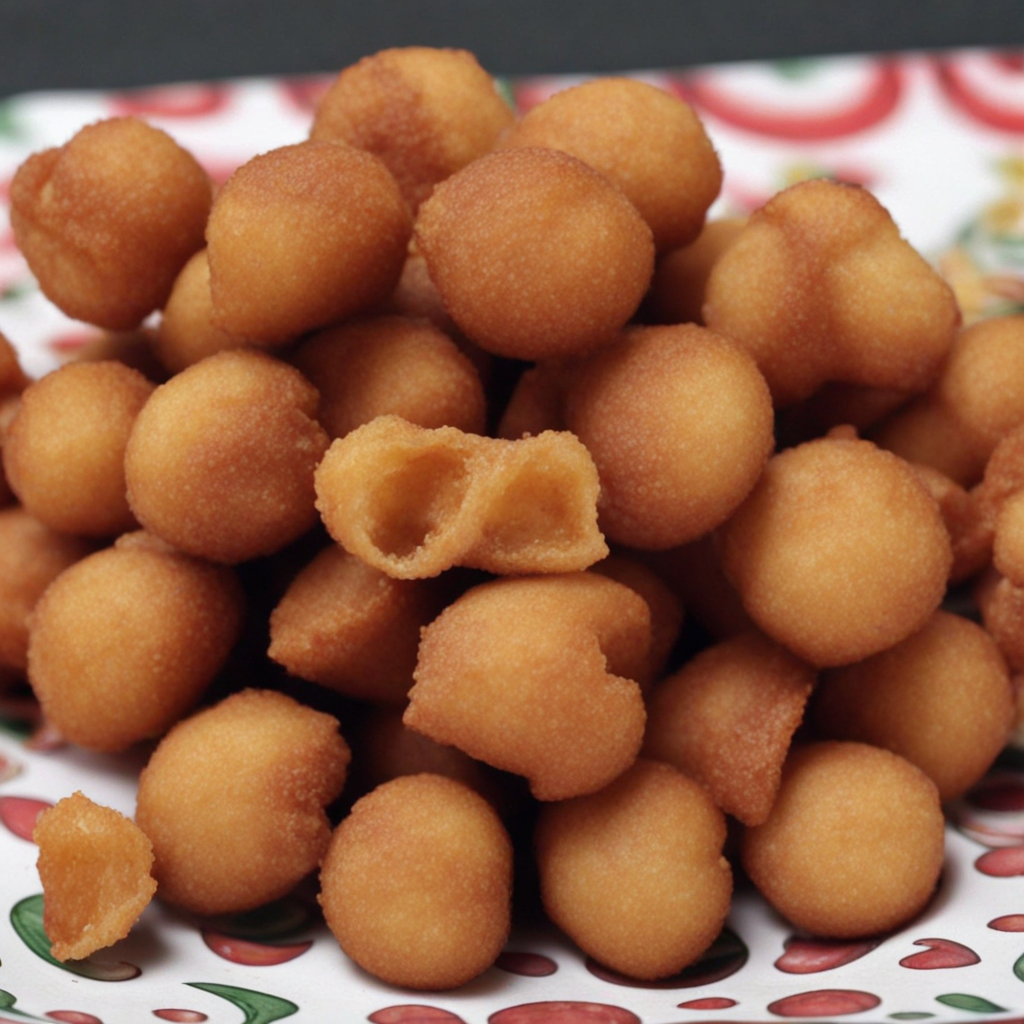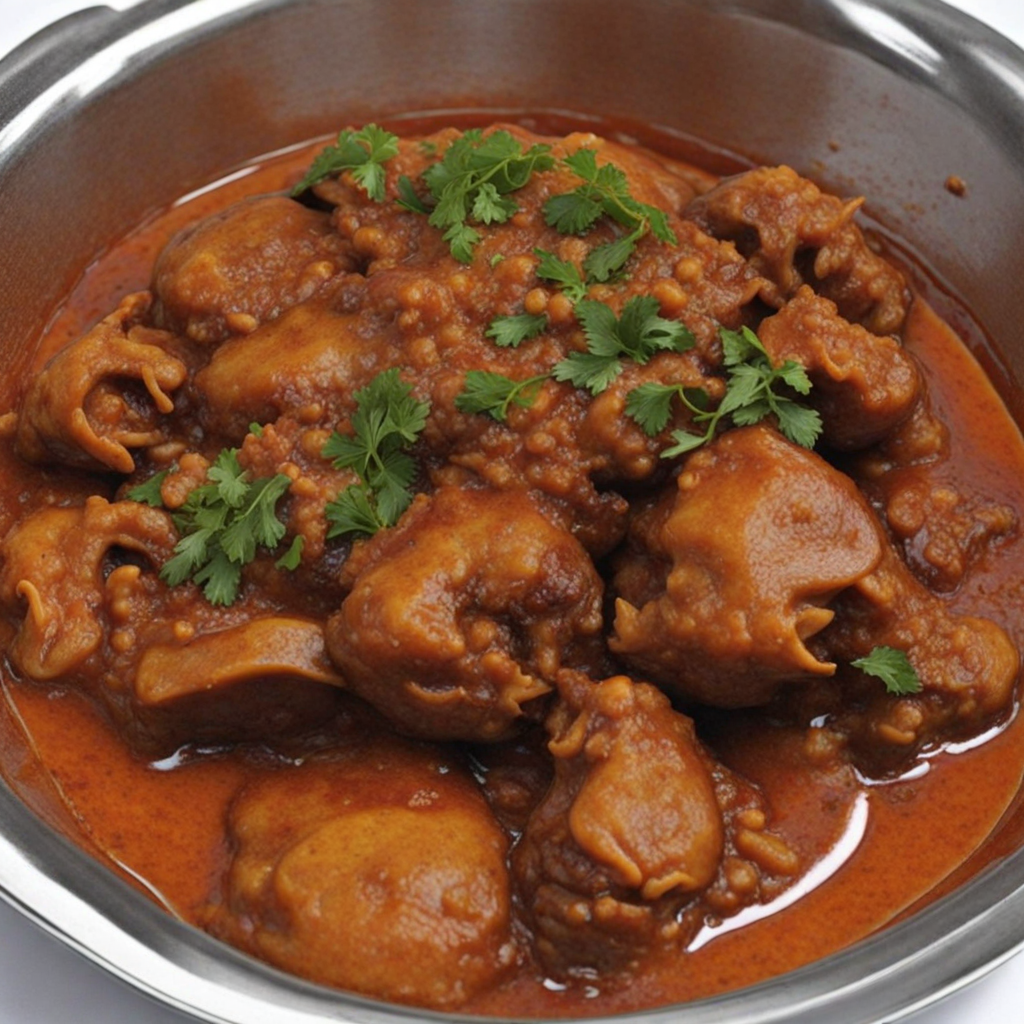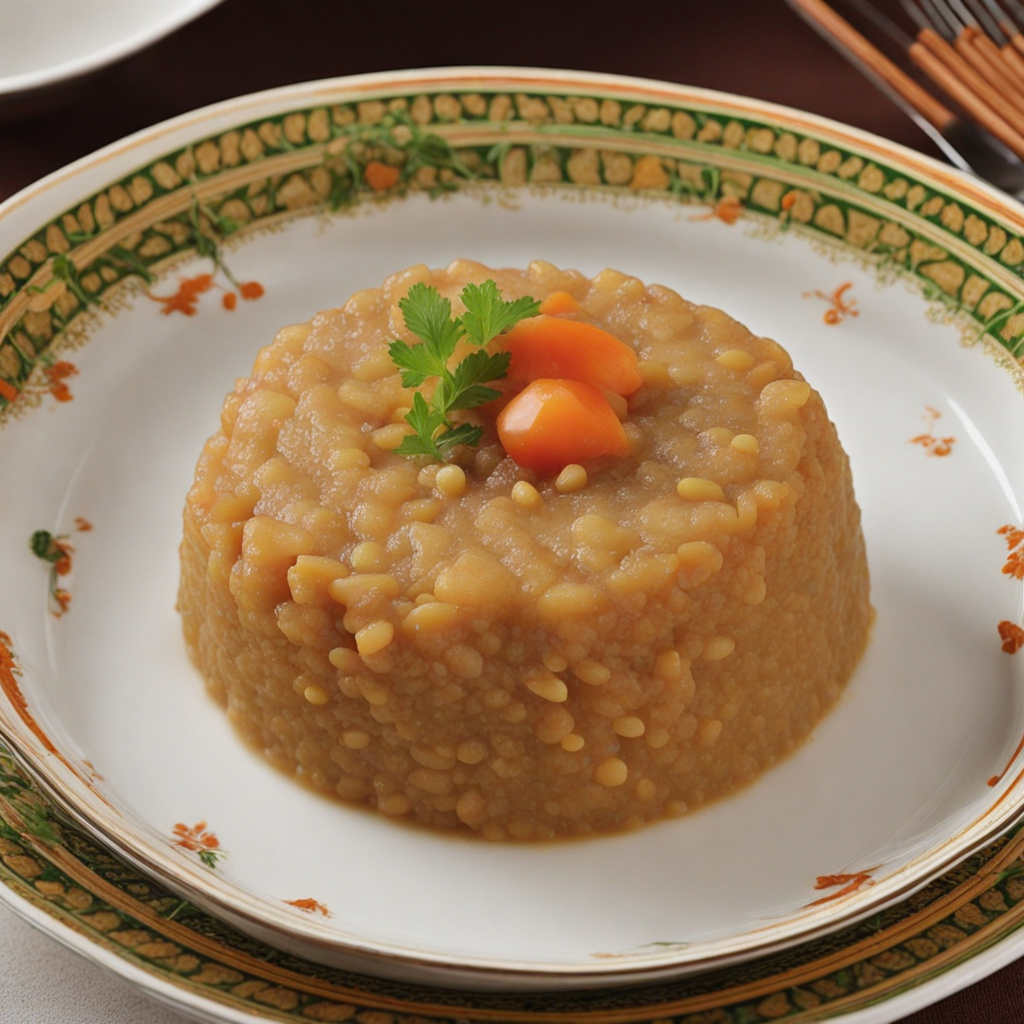Chin Chin
Chin Chin is a beloved snack from Nigeria, characterized by its delightful crunch and slightly sweet flavor. This deep-fried treat is made from a simple mixture of flour, sugar, butter, and milk, seasoned with a hint of nutmeg or vanilla to enhance its taste. The dough is rolled out and cut into various shapes, typically small squares or rectangles, before being fried until golden brown. The result is a crispy, airy texture that makes Chin Chin an irresistible munching snack, perfect for any occasion, from festive gatherings to casual snacking. The flavor profile of Chin Chin is subtly sweet, with a hint of richness from the butter, making it a satisfying treat that can be enjoyed on its own or paired with beverages like tea or fruit juice. Its crunchiness gives way to a light, airy interior, which is both comforting and addictive. Often enjoyed in large bowls at parties and celebrations, Chin Chin is a snack that evokes a sense of nostalgia for many Nigerians, reminding them of family gatherings and traditional festivities. In recent years, Chin Chin has gained popularity beyond Nigeria, with variations emerging that incorporate different spices or even chocolate for a modern twist. This versatile snack can be made in both sweet and savory versions, allowing for creative experimentation in flavors. Whether you’re discovering Chin Chin for the first time or revisiting this classic treat, each bite promises a delightful experience that showcases the rich culinary heritage of Nigeria.
How It Became This Dish
The Engaging History of Chin Chin: A Nigerian Delight Chin Chin, a beloved snack in Nigeria, has a rich history that weaves together cultural significance, culinary tradition, and the evolution of tastes across generations. This crunchy confection, often enjoyed during festivities, social gatherings, and as an everyday treat, embodies the essence of Nigerian hospitality and creativity in the kitchen. #### Origins: The Roots of Chin Chin The precise origins of Chin Chin are somewhat murky, as is the case with many traditional dishes that have been passed down through generations. However, it is widely believed that Chin Chin has its roots in West African cuisine, particularly among the Yoruba and Hausa ethnic groups. The name "Chin Chin" itself is said to have derived from the sound made when biting into the crispy snack—an onomatopoeic reflection of the delightful crunch. Initially, Chin Chin was made from simple ingredients that were readily available—flour, sugar, butter or margarine, and eggs. The combination of these elements was kneaded into a dough, which was then cut into small pieces and deep-fried until golden brown. This method of preparation is similar to that of other fried dough snacks found in various cultures, showcasing the universal appeal of fried treats. #### Cultural Significance Chin Chin is more than just a snack; it is a symbol of celebration and community in Nigeria. Its presence is almost obligatory during festive seasons, such as Christmas, weddings, and other significant cultural events. The act of preparing Chin Chin becomes a communal activity, where family members and friends gather to mix, cut, and fry the dough—sharing laughter and stories in the process. In many Nigerian households, Chin Chin is served alongside other traditional snacks, such as puff-puff (another fried dough delicacy), meat pies, and spring rolls, creating a feast that embodies the spirit of hospitality. It is also common to find Chin Chin in the hands of children during school breaks or as part of lunchboxes, further entrenching its status as a beloved everyday snack. The snack has transcended regional boundaries within Nigeria, becoming a national staple that is enjoyed across various ethnic groups. Each culture adds its unique touch, with some incorporating flavors like nutmeg, vanilla, or even coconut to the basic recipe, showcasing the diversity within Nigerian cuisine. #### Development Over Time As Nigeria's culinary landscape evolved, so did the preparation and presentation of Chin Chin. Traditionally, the snack was made at home, with families jealously guarding their own recipes. However, with the advent of modernization and urbanization, Chin Chin began to find its way into commercial markets. Street vendors and small-scale manufacturers started producing Chin Chin in large quantities, making it more accessible to a wider audience. The commercialization of Chin Chin has led to innovations in flavors and textures. While the classic version remains popular, variations such as chocolate Chin Chin, coconut Chin Chin, and even spiced versions have emerged, appealing to the evolving tastes of younger generations. These adaptations reflect a broader trend in Nigerian cuisine, where traditional dishes are reimagined to cater to contemporary palates. Moreover, the advent of social media has played a significant role in popularizing Chin Chin beyond Nigeria's borders. Food bloggers and influencers showcase their creative takes on the snack, often incorporating it into fusion dishes or pairing it with international flavors. This newfound visibility has not only enhanced the snack's reputation but also sparked interest among the diaspora, who seek to reconnect with their culinary heritage. #### Chin Chin in the Global Context While Chin Chin is a quintessentially Nigerian snack, it shares similarities with other fried dough snacks from around the world. For instance, Italian "zeppole," French "beignets," and American "doughnuts" all reflect the universal human penchant for frying dough and adding sweetness. This commonality highlights the interconnectedness of global culinary traditions, where local ingredients and techniques transform into unique cultural expressions. As a result, Chin Chin has begun to find its place in international food festivals and multicultural events, where it is celebrated as a representative of Nigerian cuisine. Chefs and food enthusiasts alike are discovering Chin Chin's versatility, using it as an ingredient in desserts, snack mixes, and even as a crunchy topping for savory dishes. #### The Future of Chin Chin Looking ahead, the future of Chin Chin appears promising. As Nigerian cuisine gains recognition on the world stage, Chin Chin stands poised to be a key player in this culinary renaissance. The growing interest in ethnic foods and the quest for authenticity among food lovers provide an opportunity for Chin Chin to shine. Furthermore, with the increasing focus on health and wellness, there is potential for the development of healthier versions of Chin Chin, using alternative flours, natural sweeteners, and healthier frying methods. This evolution could cater to health-conscious consumers while preserving the essence of the beloved snack. As Nigeria continues to flourish culturally and economically, Chin Chin will likely remain a steadfast symbol of unity, celebration, and the joy of sharing food. Its history—a tapestry of tradition, adaptation, and innovation—reflects the broader narrative of Nigerian society itself, where the past informs the present and shapes the future. In conclusion, Chin Chin is not merely a snack; it is an integral part of Nigeria’s culinary identity. Its journey from humble beginnings to a celebrated treat encapsulates the heartwarming story of a nation that thrives on community, creativity, and the love of food. Whether enjoyed at home or shared with friends, Chin Chin continues to bring people together, one crunchy bite at a time.
You may like
Discover local flavors from Nigeria







